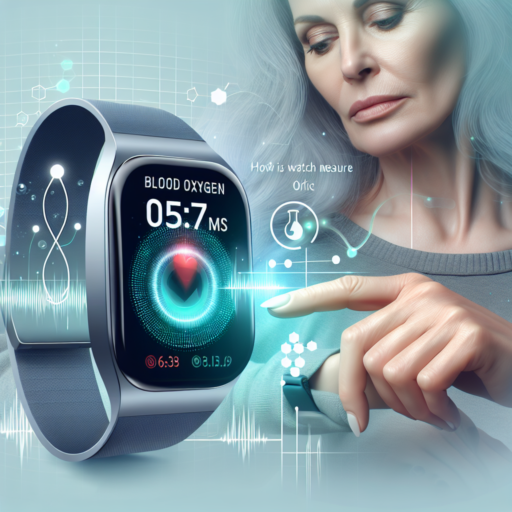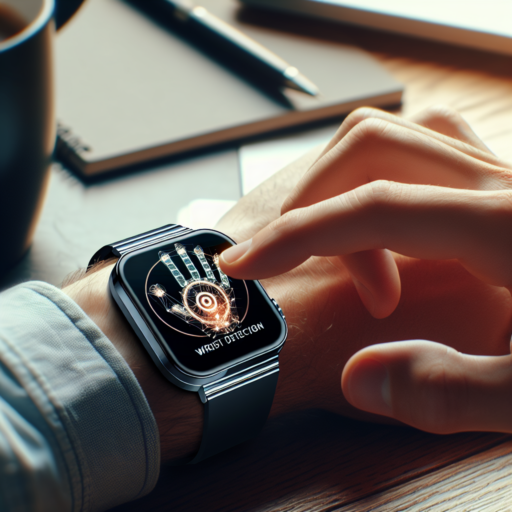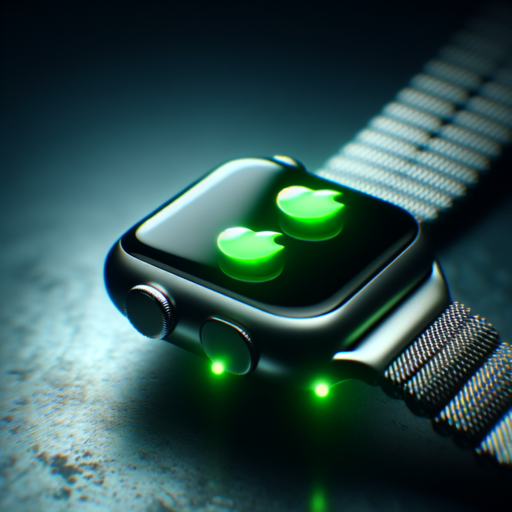Understanding Blood Oxygen Measurement Through Watches
Measuring blood oxygen through watches has become a groundbreaking feature in the realm of wearable technology. This advanced functionality not only enhances the utility of smartwatches but also offers a non-invasive way to keep track of one’s health metrics. Blood oxygen measurement, also referred to as SpO2 monitoring, indicates the oxygen saturation levels in the bloodstream. Understanding how this technology works and its relevance can be pivotal for those keen on maintaining optimal well-being.
Modern smartwatches utilize reflected light technology to monitor blood oxygen levels. This method involves shining light onto the skin and measuring the amount of light reflected back. The colors of the reflected light can indicate the amount of oxygenated or deoxygenated blood flowing through the veins at the time of measurement. It’s important to note, however, that factors such as improper placement on the wrist, movement during measurement, and even certain skin conditions can influence the accuracy of readings.
For users, the implications of monitoring blood oxygen levels can be significant. Keeping an eye on SpO2 levels can help in detecting early signs of health issues such as sleep apnea, heart conditions, and respiratory illnesses. It’s a feature particularly appreciated by athletes, hikers, and fitness enthusiasts who use these readings to optimize their training and recovery processes. Although beneficial, one should remember that these measurements are not a substitute for professional medical advice or diagnosis.
How Does Your Smartwatch Calculate Blood Oxygen Levels?
Understanding how your smartwatch calculates blood oxygen levels involves delving into the realm of advanced sensor technology and algorithms. At its core, this functionality is facilitated by a feature known as SpO2 measurement. Smartwatches equipped with this feature utilize a combination of red and infrared light sensors to penetrate the skin and measure the oxygen saturation in your blood.
The process begins when the light emitted by the smartwatch’s sensors passes through your skin and is absorbed by the blood. The key principle here is that oxygenated and deoxygenated blood absorb light differently. By analyzing the amount of light that gets reflected back to the sensors, the smartwatch can estimate the percentage of oxygenated blood, or SpO2, with impressive accuracy. This method of non-invasive measurement, albeit slightly less precise than traditional blood-drawing methods, provides users with a convenient way to monitor their oxygen saturation levels regularly.
It’s crucial to understand that the accuracy of these measurements can be affected by various factors, including skin tone, wrist placement, and even the current level of physical activity. Manufacturers continuously work on refining their algorithms and sensor technology to mitigate these challenges and provide users with more reliable data. As a testament to the evolution of this technology, recent models of smartwatches boast enhanced sensors and improved algorithms, enabling them to offer real-time monitoring of blood oxygen levels throughout the day and night.
The Science Behind Optical Blood Oxygen Sensors in Watches
Understanding Optical Blood Oxygen Sensors
Optical blood oxygen sensors in watches utilize a non-invasive technology known as photoplethysmography (PPG) to measure blood oxygen levels, or SpO2. These sensors emit red and infrared lights that penetrate the skin to detect changes in blood color. Since oxygenated and deoxygenated blood absorbs light differently, the sensor can calculate the percentage of oxygen in the bloodstream based on the light absorption.
How Watches Measure Blood Oxygen Saturation
When the heart beats, it sends a pulse of blood through the vessels, causing a change in light absorption. Optical sensors in smartwatches continuously monitor these fluctuations. By analyzing the variations in light absorption, the algorithm within the watch can determine the blood’s oxygen saturation. This technique allows individuals to monitor their SpO2 levels conveniently from their wrist, providing vital data for tracking health and fitness levels.
Advances in Optical Blood Oxygen Sensor Technology
Recent advancements have significantly improved the accuracy and reliability of optical blood oxygen sensors in watches. Innovative calibration techniques and sophisticated algorithms are now capable of accounting for factors such as skin tone, ambient light, and movement, which previously led to inaccuracies. These improvements have made wrist-based SpO2 monitoring a useful tool for athletes, patients with respiratory conditions, and individuals focused on general wellness.
No se han encontrado productos.
Steps to Ensure Accurate Blood Oxygen Readings From Your Watch
Ensuring accurate blood oxygen (SpO2) readings from your smartwatch is crucial for monitoring your health effectively. Many factors can influence the precision of these readings, from the fit of your watch to your current activity level. By following a few simple steps, you can maximize the accuracy of your blood oxygen monitoring, providing you with insights that are as reliable as possible.
Check the Fit of Your Watch
One of the most critical factors for ensuring accurate SpO2 readings is the fit of your watch on your wrist. The watch should be snug but comfortable, sitting close to the skin without causing indentation. Avoid wearing your watch too loosely, as this can allow ambient light to interfere with the sensor, leading to less accurate readings. Additionally, placing the watch too high or too low on your wrist can affect its ability to read blood oxygen levels correctly.
Maintain Proper Skin Contact
For your smartwatch’s sensors to function correctly, they must maintain proper contact with your skin. Ensure that the sensor’s area is clean and free from any obstruction such as sweat, dirt, or sunscreen. These substances can interfere with the sensor’s ability to accurately detect blood oxygen levels. Occasionally cleaning your watch, especially after exercise or exposure to harsh environments, can markedly improve the accuracy of SpO2 readings.
Understand the Impact of Movement and Temperature
Your activity level and the surrounding temperature can significantly influence the accuracy of blood oxygen readings. For more reliable measurements, try to keep your arm still, and avoid measuring during intense physical exercise when your blood flow dynamics are rapidly changing. Similarly, very cold temperatures may reduce blood circulation to your wrist, affecting the sensor’s accuracy. Taking readings in a calm, comfortable environment can help mitigate these factors.
Comparing Different Brands: Who Offers the Best Blood Oxygen Tracking?
In the ever-evolving world of health technology, consumers are bombarded with a plethora of choices, especially when it comes to wearable devices that track blood oxygen levels. Blood oxygen saturation (SpO2) monitoring has become a key feature for those monitoring their health closely, especially in the backdrop of respiratory conditions and global health concerns. In this comparison, we dive into the offerings of various brands to determine who emerges as the leader in blood oxygen tracking technology.
Accuracy and Reliability: The Forefront of Blood Oxygen Monitoring
Accuracy in blood oxygen tracking is paramount, and brands have taken varied approaches to ensure their devices provide reliable data. Brand A, known for its cutting-edge wearable technology, integrates advanced sensor technology to offer precise readings, boasting a margin of error that is impressively low. In contrast, Brand B emphasizes user comfort and prolonged monitoring, ensuring that accuracy is maintained even during sleep or physical activity. These contrasting approaches highlight a diversified market where users can choose based on their specific needs – be it for rigorous physical training or for continuous health monitoring.
Usability and Integration with Health Ecosystems
A device’s usability extends beyond its primary function of tracking blood oxygen levels. Users are inclined towards devices that offer seamless integration with broader health ecosystems. Here, Brand C stands out by offering a comprehensive platform that not only tracks SpO2 levels but also provides insights into how it impacts overall health, integrating with other health metrics and offering actionable recommendations. Furthermore, the ease of use, battery life, and the ability to sync data across different devices and platforms are critical factors that enhance user experience, making Brand C’s offering particularly compelling for those deeply invested in their health.
As we compare different brands, it becomes evident that the best blood oxygen tracking device is not a one-size-fits-all solution. Various factors such as accuracy, reliability, usability, and the ability to integrate into larger health ecosystems play a crucial role in determining which brand meets the users’ needs most effectively. Each brand brings something unique to the table, highlighting the importance of understanding individual health tracking goals when choosing a wearable device for blood oxygen monitoring.
Potential Uses and Benefits of Monitoring Blood Oxygen Via Watch
Monitoring blood oxygen levels has become a crucial part of maintaining overall health and wellness, especially with the advent of smartwatches equipped with oximeters. The integration of this technology directly into our wristwatches provides a seamless and non-invasive way to keep track of one’s oxygen saturation (SpO2) levels. This feature is particularly beneficial in today’s fast-paced lifestyle, where health often takes a backseat.
Early Detection of Health Issues
One of the key benefits of monitoring blood oxygen via a watch is the possibility of early detection of potential health issues. A sudden drop in SpO2 levels might indicate underlying problems such as sleep apnea, heart disease, or even COVID-19, requiring immediate medical attention. Consistent monitoring allows individuals to notice trends and seek professional advice before a possibly severe condition escalates.
Enhancing Sports Performance
For athletes and fitness enthusiasts, understanding and monitoring oxygen saturation can be a game-changer. During intense physical activity, the body requires more oxygen. By keeping an eye on blood oxygen levels, individuals can adjust their training intensity to optimize performance while minimizing the risk of overexertion. This is particularly crucial for high-altitude training where oxygen levels are naturally lower.
In conclusion, the convenience and accessibility of monitoring blood oxygen via a smartwatch present a multitude of benefits. From advancing personal health awareness to enabling early detection of medical conditions and optimizing physical performance, the advantages are significant. As this technology continues to evolve, it promises to play an even more integral role in proactive health management.
How Accurate Are Smartwatch Blood Oxygen Readings?
With the rise of health monitoring technologies, smartwatches have become integral in tracking various physiological parameters, including blood oxygen levels. The accuracy of smartwatch blood oxygen readings is a topic of both interest and concern among users and healthcare professionals. These devices employ light-based technology to estimate the level of oxygen saturation in the blood, a critical indicator of respiratory and overall health.
Smartwatch manufacturers claim high accuracy rates for their devices, often comparing them to the standard pulse oximeters used in medical settings. However, the accuracy can vary based on several factors including the make and model of the device, skin pigmentation, and the presence of tattoos. Additionally, the positioning of the watch on the wrist and the wearer’s movement during measurement can significantly affect the readings.
Scientific studies have explored the reliability of these wearable devices for measuring blood oxygen saturation. Findings suggest that while smartwatches can provide a good indication of blood oxygen levels, there may be discrepancies when compared to medical-grade oximeters. It is crucial for users to understand that while these devices offer the convenience of continuous monitoring, they should not replace professional medical advice or diagnostic tools.
Limitations and Considerations When Using Watches to Measure Blood Oxygen
When it comes to leveraging smartwatches for monitoring blood oxygen levels, understanding the inherent limitations and vital considerations is crucial for accurate interpretation. These advanced pieces of technology offer convenience and continuous monitoring but with certain caveats that users should be aware of. Below, we delve into the primary constraints and points of caution associated with using these wearable devices for blood oxygen measurement.
Accuracy of Sensors
The precision of blood oxygen readings from watches can significantly vary depending on the brand, sensor quality, and the technology employed. While some high-end models may boast near-medical-grade accuracy, others may fall short, leading to potentially misleading information. Factors such as skin thickness, hair density, and movement can also affect the sensors’ ability to capture correct data, making it imperative for users to consider the context of their readings.
External Environmental Factors
External factors like temperature, altitude, and even the tightness with which the watch is worn can influence the measurements. For instance, cold environments may reduce peripheral circulation, leading to lower readings. Similarly, high altitudes can naturally decrease oxygen saturation levels in the blood, a change that should be considered normal under such conditions but might be alarming without proper context.
While smartwatches with blood oxygen measurement capabilities present an innovative step towards personal health monitoring, they are not without their limitations and considerations. Users should always regard these devices as tools for general wellness monitoring rather than definitive sources for medical diagnostics. Acknowledging the potential variances and understanding how to mitigate them through correct wear and awareness of environmental impacts can significantly enhance the reliability of the data provided by these wearable technologies.
Frequently Asked Questions About Blood Oxygen Measurement on Watches
Tracking blood oxygen levels has become a crucial feature for health-conscious individuals using smartwatches. With this growing interest, several questions often surface about the functionality and accuracy of these measurements.
How Accurate are Blood Oxygen Measurements on Watches?
Many users wonder about the reliability of wrist-based measurements. Generally, smartwatches use photoplethysmography (PPG) technology, similar to pulse oximeters used in medical settings, but factors like placement on the wrist, movement, and external light can affect accuracy. Manufacturers continuously improve algorithms to enhance reliability, but it’s recommended to use these readings as a reference, not for medical diagnosis.
Can I Monitor My Blood Oxygen Level While Sleeping?
Yes, several advanced smartwatches offer the capability to monitor your blood oxygen saturation (SpO2) levels while you sleep. This function provides valuable insights into your overall health and sleep quality, potentially highlighting breathing issues or sleep apnea. However, it’s advisable to seek professional medical advice if your watch consistently shows low SpO2 levels during sleep.
What Is the Benefit of Monitoring Blood Oxygen with a Watch?
Monitoring blood oxygen levels through smartwatches offers the convenience of tracking your health metrics in real-time without needing professional medical equipment. This continuous monitoring can help detect sudden changes in your health, supporting a proactive approach to healthcare. Remember, although beneficial for wellness tracking, these measurements should supplement but not replace professional healthcare services.
Tips for Maximizing the Utility of Blood Oxygen Tracking Features
Maximizing the utility of blood oxygen tracking features on your wearable devices starts with understanding the importance of blood oxygen levels in overall health. These features, designed to offer insights into your physical wellness, can be a game-changer in managing and monitoring your health. Whether you’re an athlete looking to optimize performance, or someone focused on maintaining or improving health, utilizing these tracking features effectively is key.
Understand Your Baseline
First and foremost, understanding your baseline blood oxygen level (SpO2) is crucial. Before delving into the more advanced functionalities of your device, take the time to monitor your levels over a consistent period under various conditions. This will not only help you more accurately interpret changes but also better understand how activities, both physical and non-physical, affect your blood oxygen levels.
Utilize Alerts for Monitoring Variations
Many devices provide alerts for when your blood oxygen levels fall below a certain threshold. Taking advantage of these notifications can assist in early identification of potential health issues. It is important not to rely solely on these technologies for medical diagnosis. Instead, use them as one of many tools in your health and wellness kit. Regularly check the settings to ensure they meet your personal needs and adjust them as your fitness or health situation changes.
Incorporate It Into Your Fitness Routine
Incorporating blood oxygen tracking into your fitness routine can enhance your performance by optimizing your workout intensity based on how efficiently your body is utilizing oxygen. This is particularly beneficial in high-altitude training or when pushing your limits. By monitoring these levels, you can adjust your training intensity in real time, ensuring you are not overexerting yourself and risking injury.




